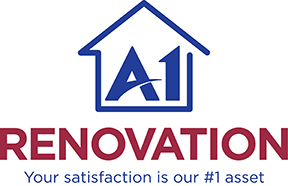Recently we began a project in Greensboro involving the assessment of wind damage on a commercial property. At first it sounded like it might be a routine repair, but once we got a closer look at the property we saw that some deeper things were amiss.
First of all, the previous general contractor had evidently walked off the project at one point, and had not done proper due diligence even while he was on the job. Several aspects of the initial design and build, including how the exterior was secured, were done in a simplistic way.
In short, none of the initial work was done with long term in mind.
While talking with the property owner it became clear that quite a few individuals involved in the project had evidently signed off on the work, which only made how lacking it was more frustrating for the property owner. How had that many people not spotted obvious problems — things that would cause the very situation they were in now?
In fact, the only other person that had properly assessed anything was the insurance adjuster that’d come by to have a look at the wind damage itself. The adjuster commented on the same aspects of the build quality being shoddy.
While the poor workmanship did not disqualify the property from the insurance payout, something else was clear.
The insurance payout would not cover the extent of the work needed to fully correct the issues.
That’s because there’s one aspect of the work purely involving repairs, for which the insurance is involved, and another separate aspect to resolve the poor build design and bringing the building up to modern code.
You see, older buildings can sometimes legally continue to operate with things that are technically no longer to code because they are grandfathered in. But as soon as extensive renovation happens — or in the case of serious damage like this with new construction to replace sections of the building — all the new work is subject to modern code.
That little distinction comes up often in our line of work, and it’s always a bit of bad news for property owners because the cost of the resolution goes up to accommodate that.
Sometimes what contributes to that is when aspects of a building were not grandfathered in, and been out of code for many years. The building owner in those cases got lucky that the city was never aware and it never resulted in fines. But from a building standpoint in our case, we can’t legally do the work and leave things still out of code.
So repairs like this often force the business owner’s hand. Changes that had not been a concern for many years are suddenly forefront.
Stay tuned for updates on this project as we continue.

